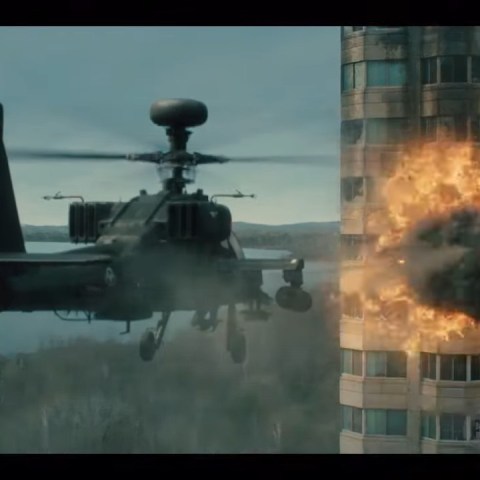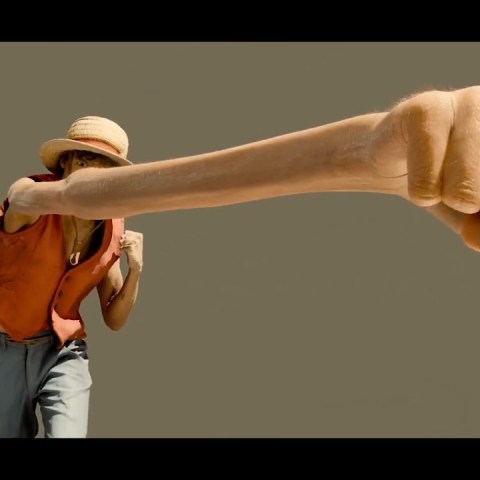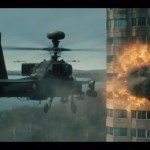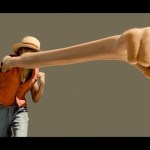Framestore goes behind the scenes of their CG creature work for ‘Lovecraft Country’.
The Shoggoth is a creature featured in HBO’s Lovecraft Country, the new series developed by Misha Green based on the 2016 novel by Matt Ruff. It was crafted by Framestore, which relied upon the studio’s own art department designs in helping to realize the beast in CG.
Here, Framestore visual effects supervisor Grant Walker outlines for befores & afters how the art department (which happens to be celebrating 10 years as a department at the studio) and the VFX team created the Shoggoth, which originate in H.P. Lovecraft’s Cthulhu Mythos. The aim was to make them as scary as possible—think; a whole lot of teeth, multiple sickly eyes and deadly drool.
b&a: Not everyone realizes that visual effects studios, including Framestore, have dedicated art departments. Can you talk a little about your art department’s role on this show?
Grant Walker: Our art department is world class. They will design stuff for films where we actually don’t necessarily get the visual effects work. People and studios sometimes come to Framestore just for the art department, just to get their concepts done, and then they take that away as a package. It doesn’t always go hand in hand with the final VFX work. Obviously it’s great for us when it does, because we have that relationship where we can kind of just pop over to the art department, chat to the artists and really understand what went into designing the creatures.

b&a: What was the art department’s brief for the Shoggoth?
Grant Walker: These characters had to be the biggest, nastiest guard dogs ever—they’re killing machines. If you read Lovecraft’s stuff, the Shoggoth is a swirling blob of eyeballs, shapeless and nasty, with many eyes. Here they wanted to turn it into something more tangible, slightly more Earth-bound. We looked at all the big predators like big cats, gorillas. The teeth were inspired by a shark. There’s raptor arms with razor sharp blades, and a big powerful tail.
It was, like, let’s make the Swiss army knife of weapons on a monster with loads of eyes. You want to look at this thing and it’s immediately scary. It’s got 4,000 teeth. It’s munching things. This thing has to just make people scared when they see it.

b&a: I’m curious about that transition from when something goes from being a design or a concept into production. Can you tell me a bit about that?
Grant Walker: For me, the design of the creature should influence the movement and the movement of the creature should also then ripple back into the design. So there’s a little bit of a loop. I know that our art department often does that internally, and did here because there was a slight change to the brief at one point. The previous design was a bit more kind of alien—it was a bit more ‘sinewy’, and they wanted to give it a more powerful look.
The art department gave us their concept sculpt in ZBrush. I gave it some more body-builder anatomy (there were lots of pictures of Arnie up around me). Then I also combined in layers of teeth. We also need to go in and work out the internal mechanics and how the creature is going to move. You take the design, you re-build it, and you get an animator involved quite quickly in the early rig.

b&a: How did the designs inform anything that could be used on set during filming?
Grant Walker: The production built a big prosthetic head and arms that were based on the original Shoggoth designs. I chopped up the ZBrush model and gave that over to the art department out in Atlanta where we were shooting. They mocked us up something that looked like an approximation of what we had. It didn’t have 4,000 teeth and it kind of looked like a big green Kermit the Frog, but it was the right size and scale. It was perfect for the job.
In some scenarios, the stunt guys could do the performance on their own, but normally it needed two people, one to hold the stand-in head and want to do the arms. It was all about, what can they do physically that will put them in line with what the Shoggoth will do physically?

b&a: Did that ‘stuffie’ need to be an exact replica, or just an approximation?
Grant Walker: It was approximation. To be honest, it got more laughs than screams on set. Maybe it’s because it didn’t have any teeth, but it was an approximation. It’s for eyelines, or for potentially seeing what kind of shadows it might cast.
All the plates that we used, the hero plates with the performers in them, were the ones with the Shoggoth stand-in in them. We always shot a clean plate as well and replicated the performance. But the performance seemed to the better when the stuntie was in there and they were holding this stuffie. There were some takes where we just put a tennis ball on a rod and said, ‘There’s your eyeline.’

b&a: You mentioned before about creating a scary creature. Specifically, what things were in the performance that made it scary?
Grant Walker: In our mind, the first emotion we were trying to achieve here was scariness. Now, what’s scary? Well, sharks are scary. When they come out of the water and their jaws extend and there are rows of teeth, that’s scary. They’ve got dark eyes. With other predators, I mean, big cats are actually beautiful. They’re scary if they want to be, but sharks are ugly, scary creatures.
Interestingly, in the design phase I did a version early on when I closed the lips and put all the teeth away. I thought, this is not as scary. How long do I spend trying to make this scary with the mouth shut? Or do I just accept the fact it’s not going to shut its mouth? It’s going to be like those big angler fish that always have these big scary teeth.
Also, the underlying structure of the Shoggoth has its skull made up of a normal cranium but the various rows of bones in the jaw mean the teeth can separate and come out. When it bites someone’s head off, we looked at doing spinning teeth inside the mouth but thought it was stretching feasibility of anatomy a little bit too much. We ended up with these mandibles inside the mouth which move fast enough to liquidize a head.
The Shoggoth’s mode of transport is like a giant mole that can dig its way through the ground. At some point there was this idea that it should have these gills. We thought, let’s play up these gills and make them a feature. We thought, what’s the use of the gills? Well, if it munches its way through the ground, it’s expelling the soil through them. And then we thought, when it bites someone’s head off, the blood would flow out of the gills and make a right mess. Misha was never shying away from making it as scary as possible and as violent as possible. She’d say, ‘More blood!’
Then there were the eyes, which went over the body. We made them look kind of sickly and slightly diseased or slightly unpleasant, looking at fish eyes which are not very nice. Loads of eyes bobbing in and out of the surface, like a skin membrane, that blinks.

b&a: What about drool? What kind of conversations did you have about drool?
Grant Walker: Drool was interesting. It’s quite a tricky thing to do well in CG. A lot of the time, drool can be done with sticky things on set that you open and close and then comp in. But it wasn’t going to work for us. We needed to control it in CG. It was one of the first things I said to the team: drool is not an afterthought on the Shoggoth, it’s a feature. We needed to develop this early in the project. I didn’t want to get 80% there on the shot and go, ‘Oh, wouldn’t it be nice to add some drool?’
A lot of R&D went into it. There’s a few different types of drool. There’s stretchy drool and where it drops down. As he goes on a rampage, sometimes he’s just been munching lots of people, so the drool’s runnier and you get lots of blood running down the surface. All the FX for that went through Houdini. From the beginning, it was known that we would have lots of drool, lots of blood. It’s disgusting! We looked at Komodo dragons, whose drool can probably kill you, and so we had to think of it in the same way for our drool.


















